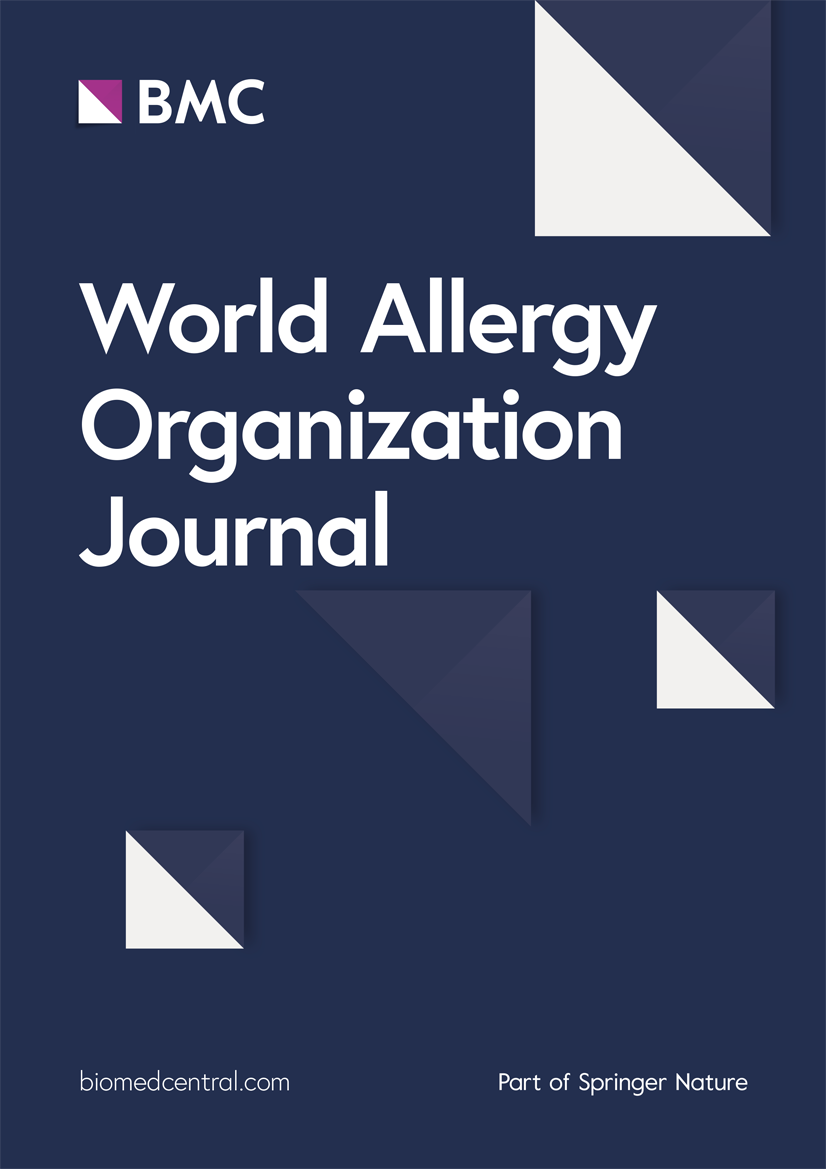Identification of the primary sensitizing mite (dominant mite) in patients with allergic respiratory disease sensitized to Dermatophagoides pteronyssinus and Lepidoglyphus destructor
IF 4.3
2区 医学
Q2 ALLERGY
引用次数: 0
Abstract
Objective
To identify the dominant mite in patients with allergic respiratory disease (ARD) and double sensitization to Dermatophagoides pteronyssinus (Dpt) and Lepidoglyphus destructor (Ld).
Methods
Cross-sectional study including patients with Dpt and Ld sensitization (skin prick test [SPT] and specific IgE [sIgE]), with ARD. We measured sIgE to Dpt and Ld major allergens and performed CAP Inhibition experiments. The dominant mite was determined considering the Dpt/Ld ratio (≥5 Dpt and ≤0.2 Ld dominance) and CAP inhibition results (heterologous inhibition ≥50% indicates dominance).
Results
We included 67 patients (62.7% men), with a mean (range) age of 35.8 (7–81) years. We found significant correlations between sIgE to Dpt whole extract (Dpt-sIgE) and sIgE to Der p 1, Der p 2, and Der p 23 (p < 0.0001) and between Ld-sIgE and Lep d 2-sIgE (p < 0.0001). No significant correlation was found between SPT wheal diameter and Dpt-sIgE and Ld-sIgE, nor between Ld-sIgE or Lep d 2-sIgE and Der p 23-sIgE. Patients were classified into group A (Dpt dominance), n = 31 (46.3%); group B (Ld dominance), n = 8 (11.9%); and group C (unclear dominance), n = 28 (41.8%). A Dpt/Ld ratio ≥3 diagnosed 90.3% of patients in group A, ≤0.2 diagnosed 87.5% of patients in group B, and a ratio between 0.4 and 3 diagnosed 78% of patients in group C.
Conclusions
In patients with ARD sensitized to Dpt and Ld, the sIgE Dpt/Ld ratio and, in specific situations, the Der p 1+Der p 23/Ld ratio, allow identification of the dominant mite in a high percentage of cases.
致敏螨(优势螨)在致敏呼吸道疾病患者中的鉴定
目的鉴定变应性呼吸系统疾病(ARD)患者中优势螨类,并对翼状螨(Dpt)和破坏性鳞翅目螨(Ld)双致敏。方法横断面研究纳入Dpt和Ld致敏(皮肤点刺试验[SPT]和特异性IgE [sIgE])、ARD患者。测定sIgE对Dpt和Ld主要过敏原的影响,并进行CAP抑制实验。根据Dpt/Ld比值(Dpt≥5,Ld≤0.2)和CAP抑制结果(异源抑制≥50%为优势)确定优势螨。结果纳入67例患者(男性占62.7%),平均(范围)年龄35.8岁(7-81岁)。我们发现sIgE与Dpt全提取物(Dpt-sIgE)和sIgE与Der p 1、Der p 2和Der p 23之间存在显著相关性(p <;0.0001), Ld-sIgE和Ld-sIgE之间(p <;0.0001)。SPT轮径与Dpt-sIgE、Ld-sIgE、Ld-sIgE、Ld-sIgE、Lep - 2-sIgE、derp - 23-sIgE无显著相关。A组(Dpt为主)31例(46.3%);B组(Ld为主),n = 8 (11.9%);C组(显性不明确),n = 28(41.8%)。在A组中,Dpt/Ld比值≥3诊断90.3%,在B组中,Dpt/Ld比值≤0.2诊断87.5%,在c组中,Dpt/Ld比值在0.4 ~ 3之间诊断78%。结论在对Dpt和Ld敏感的ARD患者中,sIgE Dpt/Ld比值,在特定情况下,Der p 1+Der p 23/Ld比值,可以在高比例的病例中识别优势螨。
本文章由计算机程序翻译,如有差异,请以英文原文为准。
求助全文
约1分钟内获得全文
求助全文
来源期刊

World Allergy Organization Journal
Immunology and Microbiology-Immunology
CiteScore
9.10
自引率
5.90%
发文量
91
审稿时长
9 weeks
期刊介绍:
The official pubication of the World Allergy Organization, the World Allergy Organization Journal (WAOjournal) publishes original mechanistic, translational, and clinical research on the topics of allergy, asthma, anaphylaxis, and clincial immunology, as well as reviews, guidelines, and position papers that contribute to the improvement of patient care. WAOjournal publishes research on the growth of allergy prevalence within the scope of single countries, country comparisons, and practical global issues and regulations, or threats to the allergy specialty. The Journal invites the submissions of all authors interested in publishing on current global problems in allergy, asthma, anaphylaxis, and immunology. Of particular interest are the immunological consequences of climate change and the subsequent systematic transformations in food habits and their consequences for the allergy/immunology discipline.
 求助内容:
求助内容: 应助结果提醒方式:
应助结果提醒方式:


